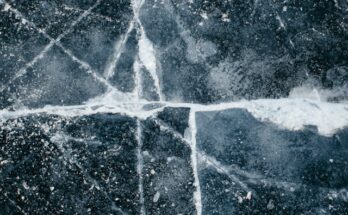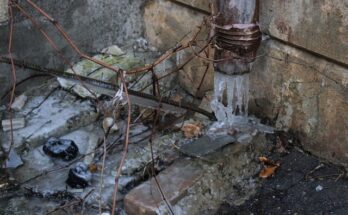If you have noticed a crusty white deposit on your wall or floor, especially in a basement or below-surface room, you have seen efflorescence.
Efflorescence is made of salts. These salts were usually trapped in the surface of the stucco, stone, concrete, or brick that is now showing the efflorescence, though sometimes it can be carried in by the water itself.
It can happen inside and out of the structure. Depending on where you live, you might see it at different times of the year and at varying intensities.
It is important that you get efflorescence looked at by an expert. First, you want to make sure it is not leading to an unhealthy moldy condition. Second, you want to get to the root of the problem and keep water outside of your structure.
The conditions for efflorescence
So if the salts are present, any form of moisture can bring them out. A heavy snowfall, steady rain, or even excessive humidity near a cool air leak can cause it.
This condensation or wicking then allow the salts to gather in one place. When the condensation evaporates, all that is left is the salt that was suspended in the water. This can be reflective, giving the efflorescence a shiny look, or it can merely be dusty. In this case it might resemble a mold or even dust from drywall or other building materials.
Another cause of efflorescence is the building process. Either moving materials in from outside, or exposing materials to outdoor temperatures and humidity before re-engaging proper ventilation and heating and cooling can cause efflorescence to form on nearly any surface.
What efflorescence might mean
If you can’t easily trace the efflorescence back to an individual issue like a building project or an HVAC malfunction, you might have a more serious building concern. You should call a professional waterproofer out to look.
The inspector will need to look closely for evidence of insufficient ventilation, improper moisture barrier or faulty installation, leakage or failure of the joint material, or some even larger causes.
The inspector will be assessing the entire affected area and asking questions. How long has this been going on? How far does it spread? What are the conditions when it appears and when it goes away?
They will also closely look all around the affected area. This might mean poking behind drywall, or accessing spaces above or below the trouble area. They will also look for how water flows around that area and may even need access to a hose so they can re-create rainy conditions to see what is contributing to the problem.
Solutions
Unfortunately, efflorescence can be a sign of a fairly significant problem with expensive solutions.
Your waterproofing expert will want to expose the whole wall to administer a solution, which might include any of the following:
- Installing new waterproof sheeting between the masonry or concrete.
- Applying sealant to all or part of the wall
- Re-sloping the exterior or applying exterior drainage to drive water away from the wall
- Re-installing grout specifically designed for moisture-rich environments
Be sure to discuss all options with your waterproofer to make sure you keep water where it belongs!



